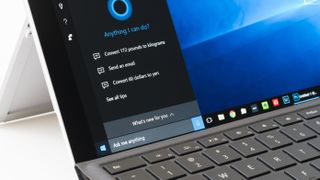
Windows 10 is in strong demand thanks to folks fleeing from Windows 7, going by Microsoft’s financial results for Q2, which saw the company rake in revenue of $36.9 billion (around £28.5 billion, AU$55 billion).
As ZDNet reports, Windows growth was better than anticipated, with consumer (Windows 10 Home) revenue up 4% compared to the same quarter last year – and that’s the first time it has increased in a year.
Windows Pro OEM revenue (meaning installations preloaded on PCs made by manufacturers) was up very strongly: 27% year-on-year.
One of the main drivers of the robust Windows sales was a ‘strong demand’ for Windows 10, which was down to Windows 7 hitting end-of-life, and users migrating before that happens. Microsoft ceased support for Windows 7 on January 14, meaning it no longer gets official updates or security fixes – unless you pay for them.
As you’d expect, a good chunk of that cash and demand came from business users, with consumer sales representing around 20% of overall Windows revenue. However, apparently organizations paying for extended support have not made much of a contribution to Microsoft’s coffers, at least not yet anyway.
Contents
Other factors
There were other factors stoking the impressive Windows sales, which included the ‘resolution of an Intel chip supply issue’ which hit home in Q2 – while this is still ongoing in the broader picture, according to Intel itself, evidently it isn’t as bad now, at least not for Microsoft.
Finally, a single hardware manufacturer pre-bought a whole slab of Windows 10 licenses due to expected trade or tariff issues, and that must have been a weighty amount for it to merit a mention as a factor.
In total, Microsoft’s personal computing division, which includes Windows, Microsoft 365 (Office), Bing (search revenue), gaming (including Xbox), and hardware like the Surface, raked in $13.2 billion (around £10 billion, AU$19.6 billion). Surface revenue hit $1.98 billion (around £1.5 billion, AU$2.95 billion), incidentally.
Those mulling a move from Windows 7 would do well to remember that you can (unofficially) still upgrade to Windows 10 for free, via a loophole Microsoft hasn’t yet closed.
The free upgrade was, of course, only supposed to be in place for the first year after Windows 10 was released, but it is still active – albeit with caveats.
[“source=techradar”]




